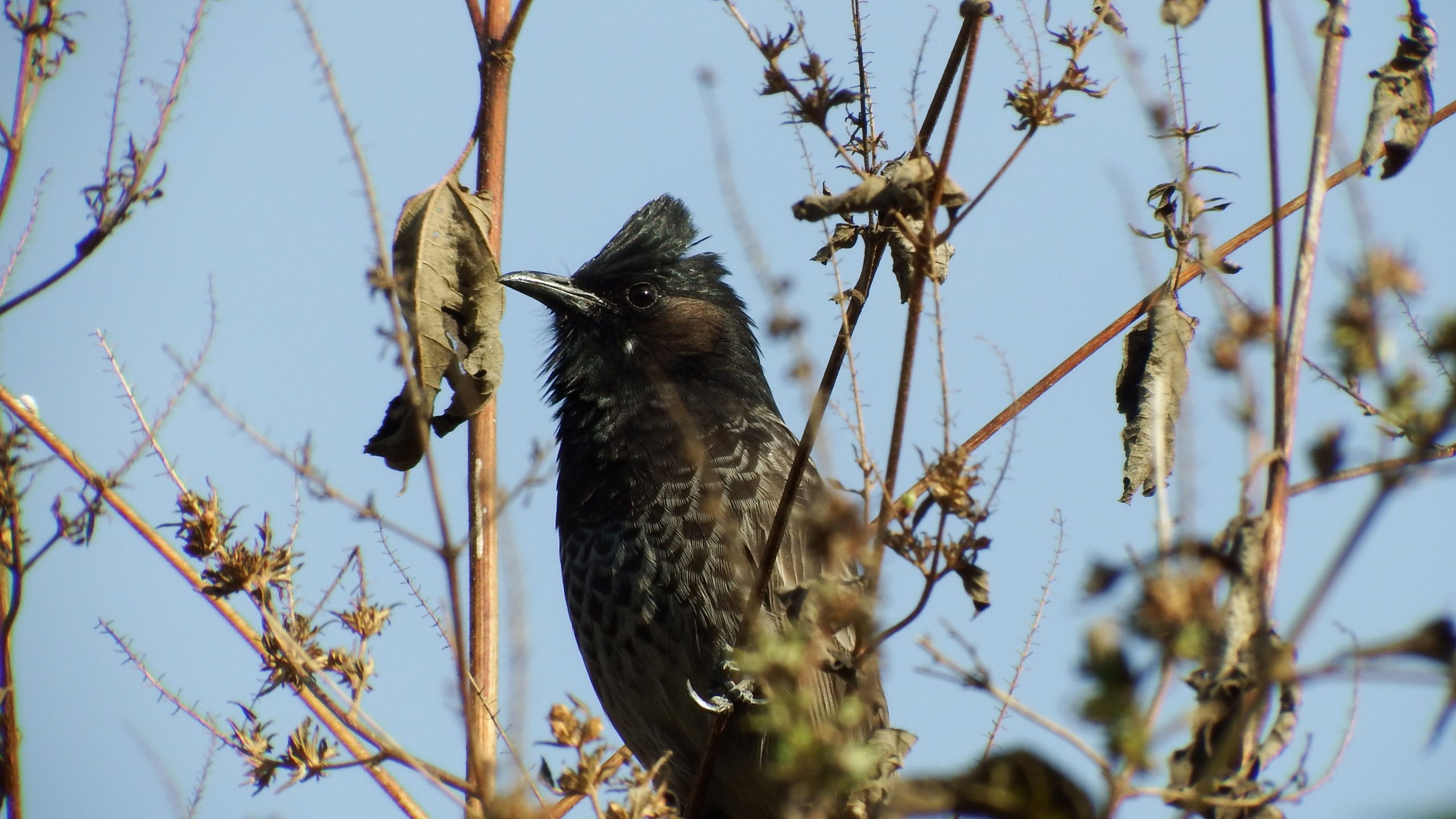Exotic, Invasive, Native
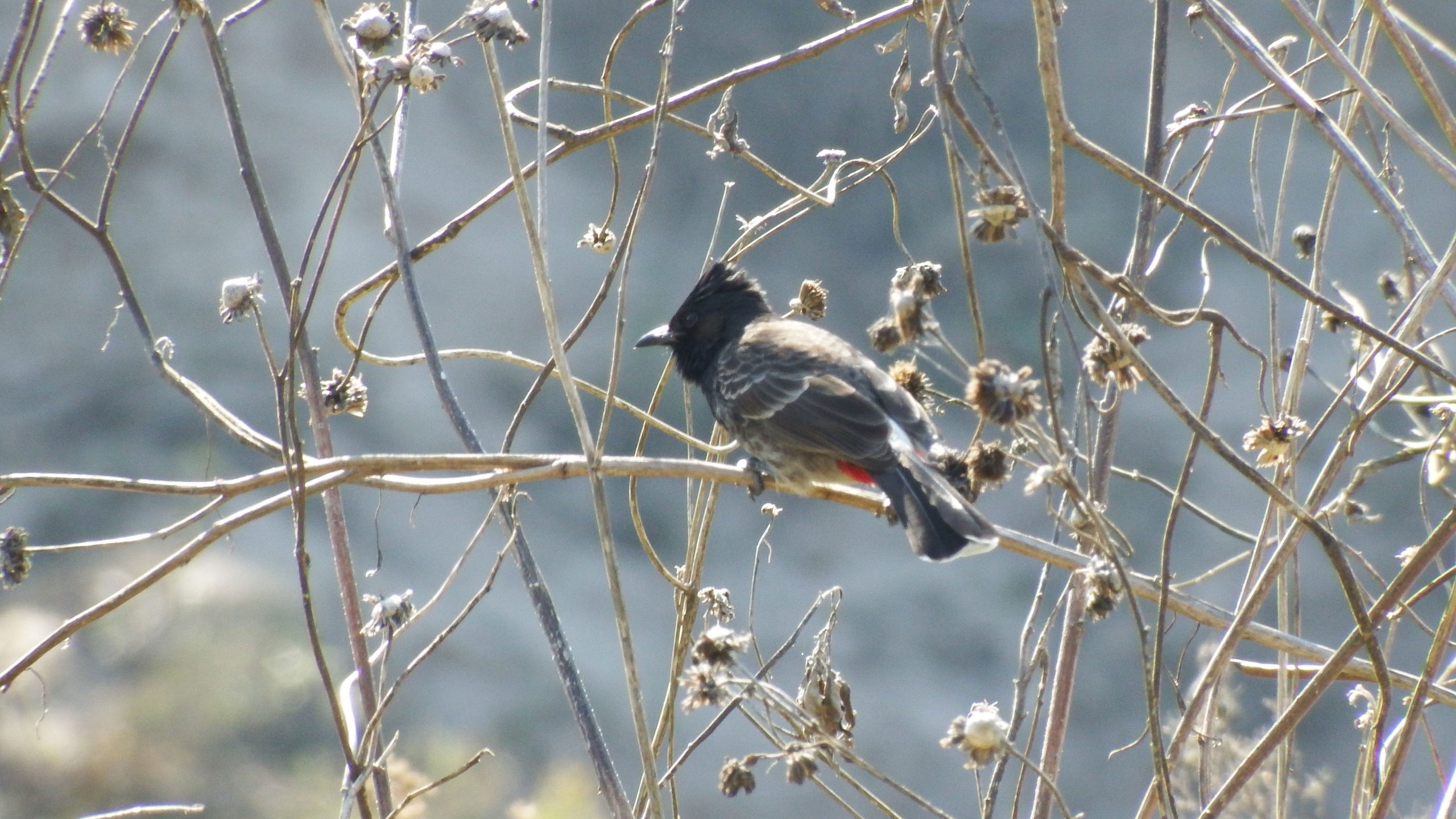
This week, I visited our miracle prairie and was blown away by how birdy it was. This almost never happens, but that prairie was genuinely full of birds. Maybe not rarely seen birds, but it was full of the birds that should have been there. I saw ruby crowned kinglets, phoebes, orange crowned warblers, a Carolina wren. I also saw red-vented bulbuls.
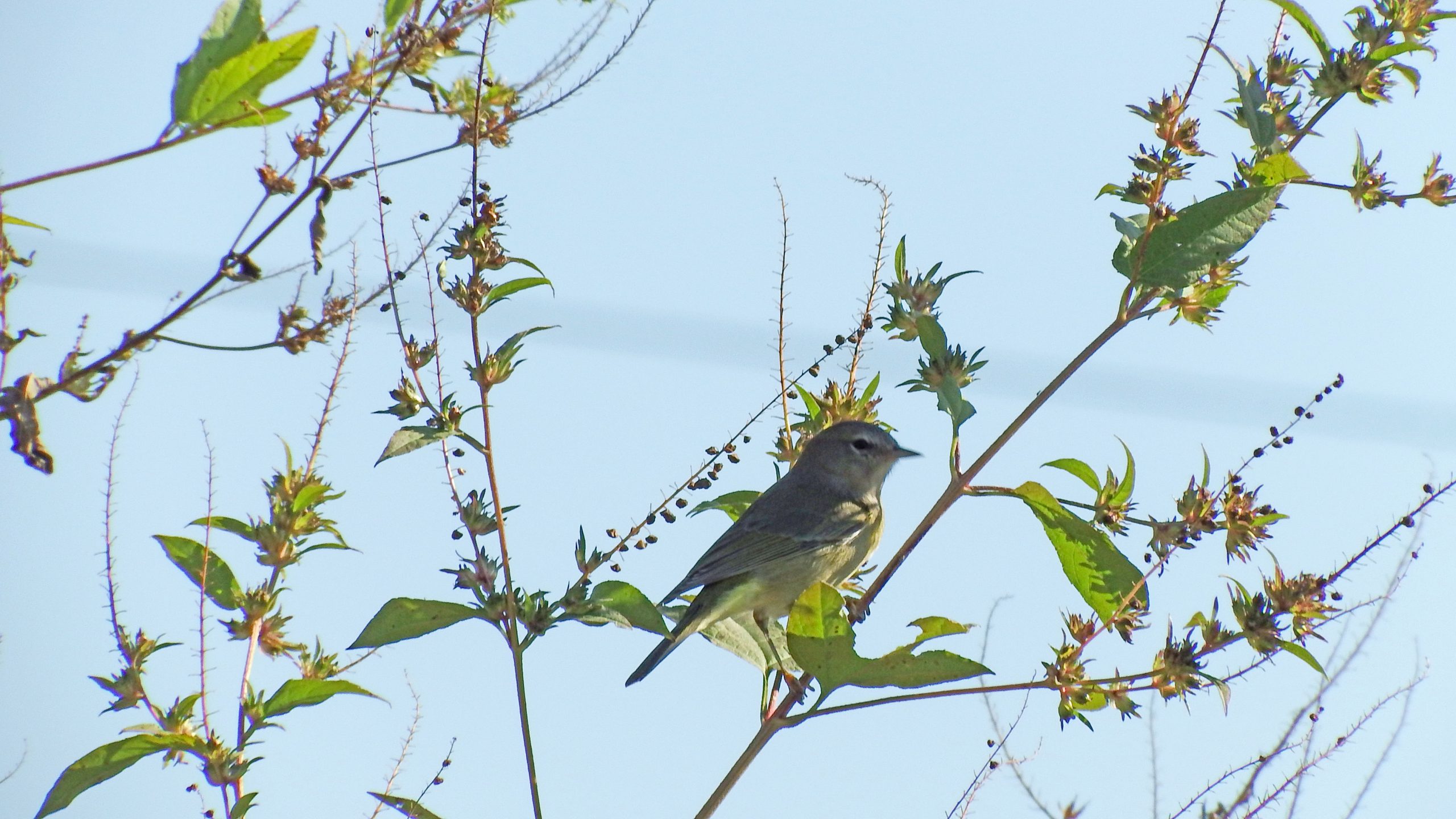
This orange-crowned warbler is a typical winter resident in Houston. There was an abundance of them and at the time I was watching, they and the active, but un-photographed ruby-crowned kinglets spent a lot of time on horseweed gone to seed.
Every couple of years, someone will call me to say they’ve seen a bird that’s not in the bird books. My first question in return is did it have a black crest? Nine time out of ten the answer is yes and I get to tell them that they have likely sighted a bird who shouldn’t be here.
Houston Heights and the surrounding areas (including our Park) are playing host to an Asian anomaly, the red-vented bulbul. We are pretty much the only place in the continental US that you can see these birds in the wild. It’s assumed that caged birds escaped some years ago and set up a breeding population. Red-vented bulbuls (RVBs) are noisy birds and not particularly shy. They are enthusiastic fruit eaters. If you have a fruit tree in your yard and live reasonably near the Heights, you have perhaps been visited by the bulbuls.
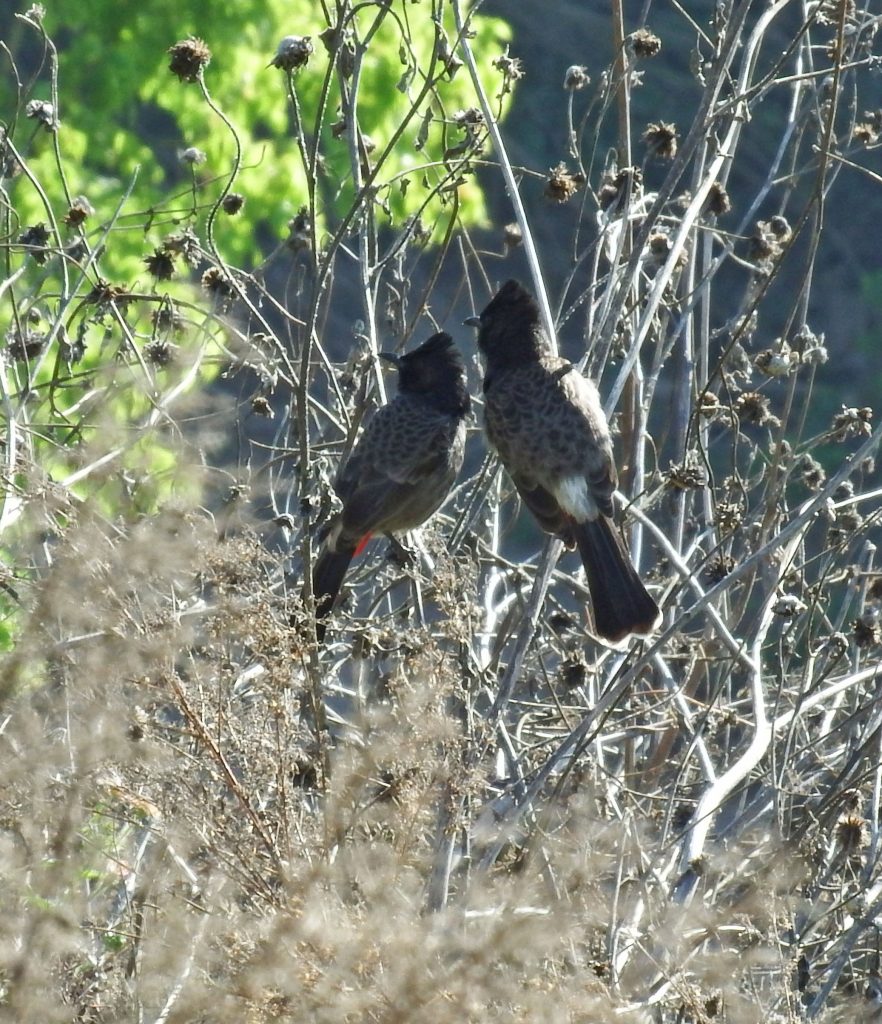
Two red-vented bulbuls. Males and females look alike. You can see the white rump and white tip on the tail. The bird on the left is showing a bit of the red vent for which the bird is named.
The miracle-prairie bulbuls were feasting on lantana berries. I smiled at the thought of these Asian birds feasting on our native lantana, a great habitat plant for our area. Admittedly, the lantanas in our Park are mostly common lantanas, the ones with pink and yellow flowers. They are native to Central and South America. The true Texas native is the one with orange and yellow flowers, but close enough.
So this was starting off as a celebration of if you build it they will come. Our prairie was full of birds! And then I googled red vented bulbul to flesh out some details and found that they are reviled around the world. They are on the 100 most invasive species list by the Global Invasive Species Database.
As evidenced by their growing presence in Houston, they are wonderfully adaptive and introduced populations have grown large enough to threaten biodiversity. on some isolated Pacific islands. They are also an expensive pest for fruit growers. In addition, the RVB has been singled out for particular scorn because it is a dedicated consumer of fruits of invasive trees and shrubs, and through the miracle of digestion spreads seeds of invasives far and wide.
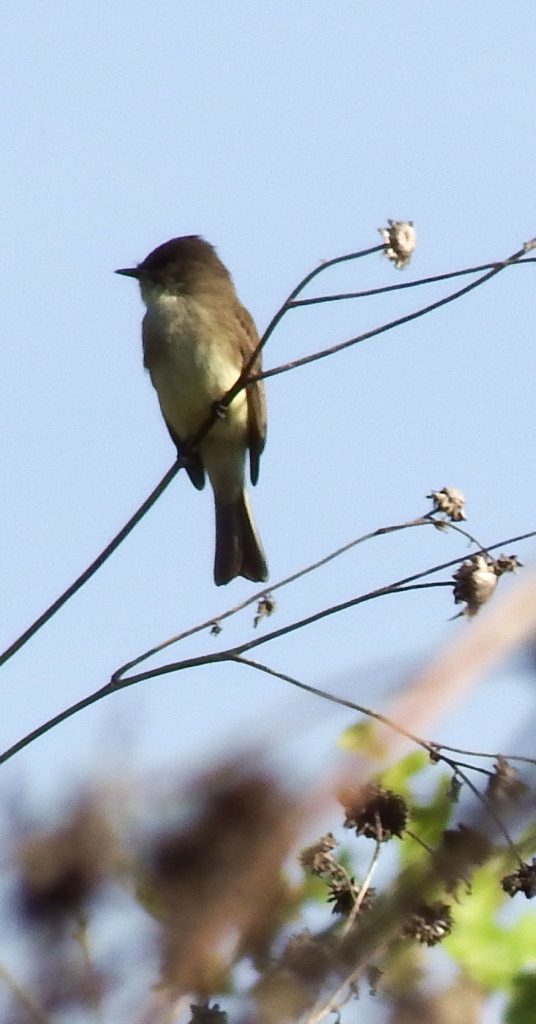
This Eastern phoebe is a type of flycatcher. These birds winter in Houston and I have seen them frequently on the other side of the bayou.
The invasive shrub the RVB is most connected with is the common lantana. The same shrub they were eating in the Park this week. Our pink and yellow lantana, that populates every empty lot and untended garden, is apparently uncontrollable outside of its normal range which we are more or less in.
Lantana is responsible for crowding out native plants most especially in Australia and the southern Pacific and parts of Africa. The invasive range of lantana and the bulbul overlap and in fact, these two augment each other’s noxious impact. The bulbuls eat lantana berries, spreading the seeds far and wide. So nourishing do the bulbuls find the lantana that they are able themselves to thrive and displace less hardy native birds who, perhaps, can’t survive on a diet of lantana berries.
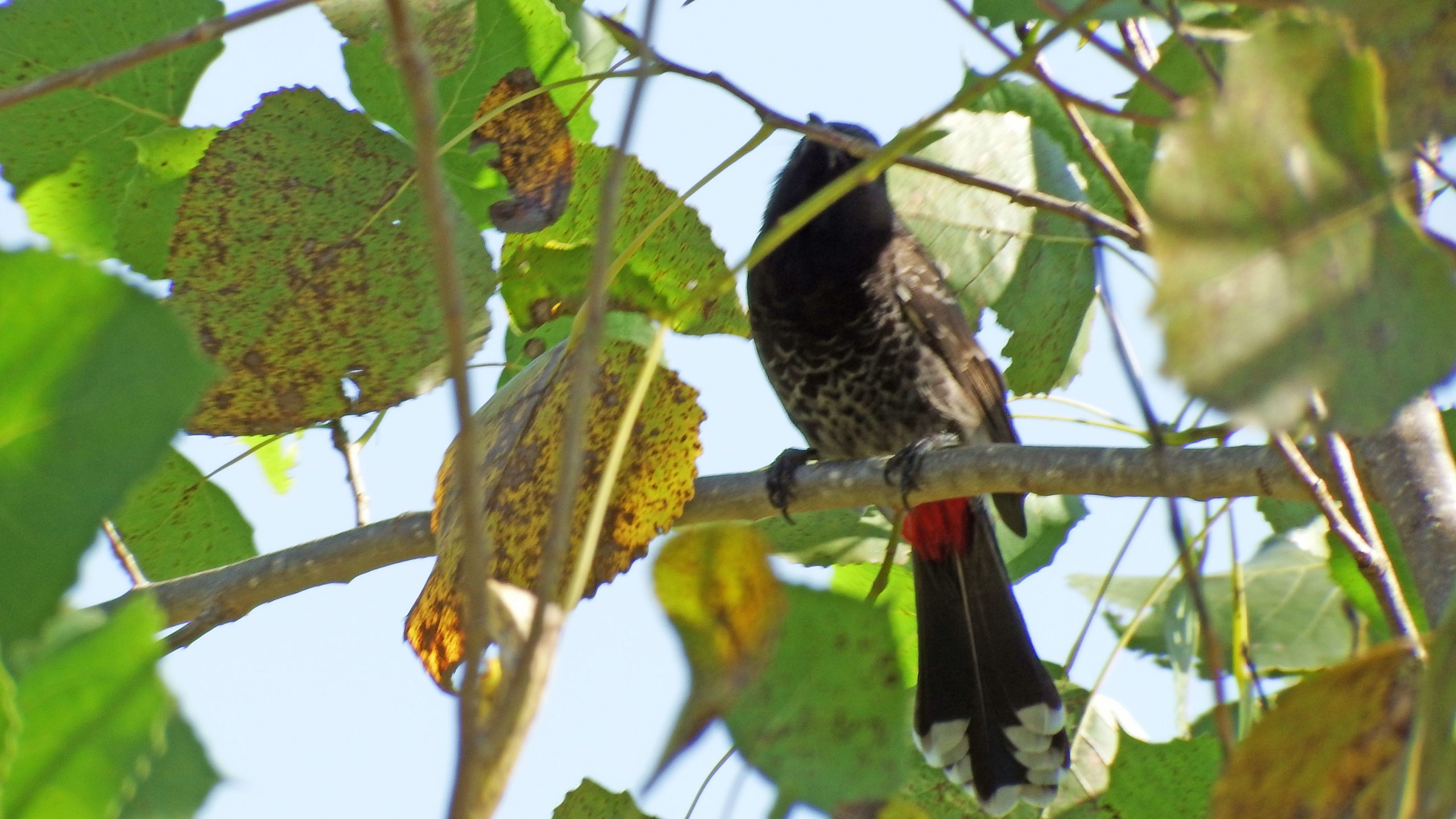
This photo gives you a good look at the red vent, which you mostly see from beneath. Also note the white tips on the end of the tail feathers.
So my original, hopeful story of if you build it they will come has become something less positive. A scientist at the Museum of Natural Science is tracking the RVBs in Houston and unless you have a fig tree (as I do) and really want to eat all those figs yourself (lots of luck!) the red vented bulbul is just an interesting bird to run into here in Houston. And our boring lantana is the world’s equivalent of our house sparrows, an unloved intruder who has forced our native birds out of our yards.
We throw around the terms exotic, invasive and native. But our exotic is someone else’s invasive and yet someone else’s native. The more we move around, the more the rest of the world will hitch a ride. But please tell Australia, I’m very sorry about the lantana.
